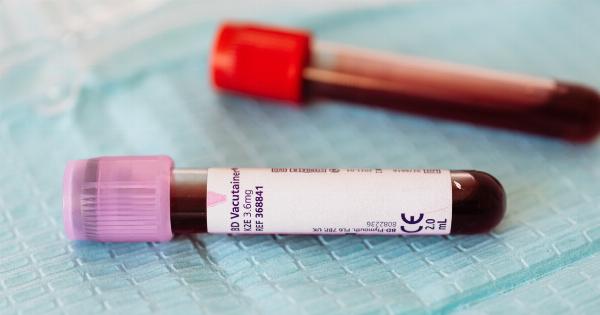Cancer affects millions of people worldwide and is one of the leading causes of death. The earlier it is detected, the better the chances of successful treatment.
However, traditional cancer screening methods like mammograms, colonoscopy, and biopsies can be invasive, uncomfortable, and expensive. That’s where simple blood tests for cancer screening come in, offering a less invasive and cost-effective alternative for detecting various types of cancers in their early stages.
In this article, we’ll explore the science behind cancer blood tests, their benefits and limitations, and the types of cancer that can be screened using this method.
The Science Behind Cancer Blood Tests
Cancer blood tests work by detecting certain markers or substances in the blood that are produced by cancer cells or the body in response to cancer. These markers can be proteins, hormones, enzymes, or genetic material.
The tests measure the levels of these markers in the blood and compare them to the normal range for a healthy person. If the levels are abnormally high, it could indicate the presence of cancer cells or a cancerous tumor in the body.
However, it’s important to note that not all cancers produce specific markers or that some markers are not specific to certain cancers. Therefore, cancer blood tests are not definitive or conclusive tests for cancer diagnosis.
They are screening tools that can indicate the need for further tests, such as imaging scans, biopsies, or other diagnostic procedures.
The Benefits and Limitations of Cancer Blood Tests
One of the primary benefits of cancer blood tests is their non-invasive and painless nature.
Unlike mammograms or colonoscopies, which require uncomfortable procedures and physical exams, blood tests only require a simple blood draw that can be done at a laboratory, clinic, or doctor’s office.
Another benefit is their cost-effectiveness. Cancer blood tests are generally less expensive than traditional screening methods, especially when done on a regular basis for high-risk individuals or those with a family history of cancer.
This can make cancer screening more accessible and affordable for people who might otherwise avoid it due to financial constraints.
However, cancer blood tests also have some limitations and drawbacks. Firstly, not all cancers can be detected through blood tests.
Some cancers, like brain or pancreatic cancer, may not produce any specific markers or may not have detectable markers until later stages. Therefore, blood tests for cancer screening may not be able to detect these cancers when they are still treatable.
Secondly, cancer blood tests may produce false positives or false negatives. A false positive occurs when the test shows abnormal levels of markers that are not cancer-related, leading to unnecessary anxiety, additional tests, or even treatments.
A false negative occurs when the test shows normal levels of markers even though there are cancer cells or a tumor present, leading to a false sense of security or delayed diagnosis.
Therefore, cancer blood tests should not be used as a standalone diagnostic tool or a substitute for other screening methods.
They should be used in conjunction with other tests and evaluations to get a more accurate and comprehensive picture of a person’s cancer risk and status.
The Types of Cancer That Can Be Screened Using Blood Tests
There are several types of cancer that can be screened or monitored using blood tests. Here are some of the most common ones:.
Breast Cancer
Breast cancer blood tests measure the levels of various markers, including CA 15-3, CA 27.29, and HER2/neu. These markers can indicate the presence of breast cancer cells or the recurrence of cancer after treatment.
Colon Cancer
Colon cancer blood tests measure the levels of CEA (carcinoembryonic antigen) and CA 19-9. These markers can indicate the presence of colon cancer cells or the recurrence of cancer after treatment.
Lung Cancer
Lung cancer blood tests measure the levels of certain proteins, such as CEA and SCC (squamous cell carcinoma antigen), or genetic mutations, such as EGFR (epidermal growth factor receptor).
These markers can indicate the presence of lung cancer cells or the susceptibility to certain treatments.
Ovarian Cancer
Ovarian cancer blood tests measure the levels of CA 125, HE4 (human epididymis protein 4), and other markers. These markers can indicate the presence of ovarian cancer cells or the likelihood of ovarian cancer in high-risk individuals.
Prostate Cancer
Prostate cancer blood tests measure the levels of PSA (prostate-specific antigen) and other markers, such as PHI (prostate health index) and 4Kscore. These markers can indicate the presence of prostate cancer cells or the aggressiveness of the cancer.
Conclusion
Simple blood tests for cancer screening have the potential to revolutionize the way we detect and treat cancer. They are non-invasive, cost-effective, and can detect certain types of cancers in their early stages.
However, they still have some limitations and should not be used as a standalone diagnostic tool. If you’re concerned about your cancer risk or have a family history of cancer, talk to your doctor about whether cancer blood tests are appropriate for you and which types of tests are recommended.


























